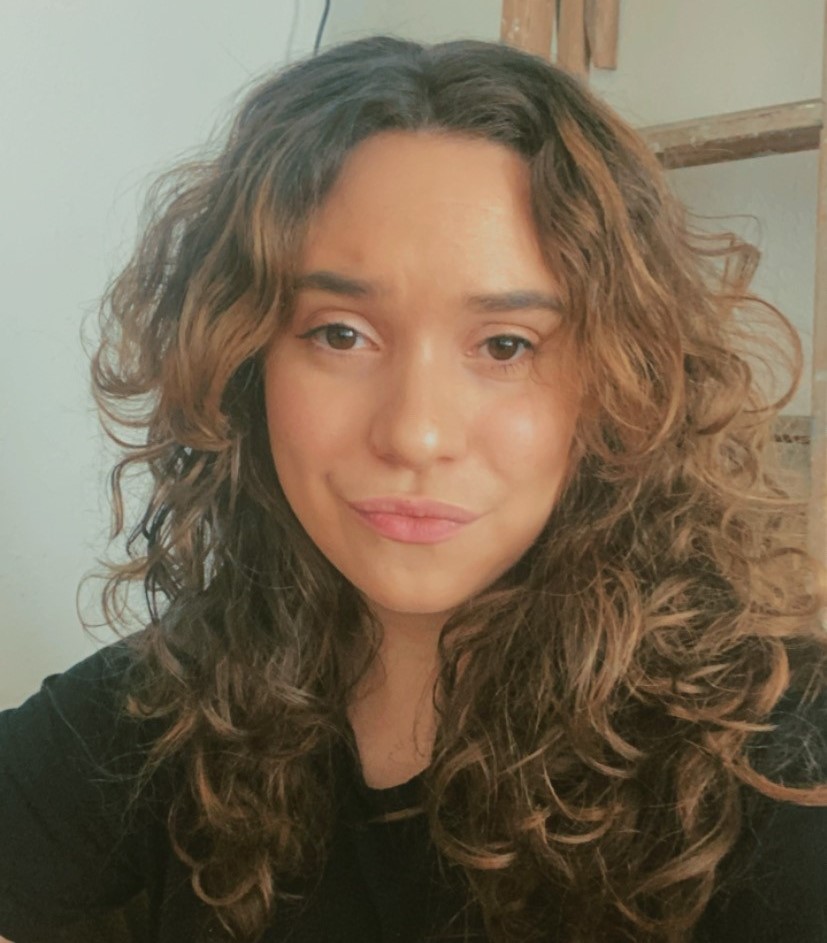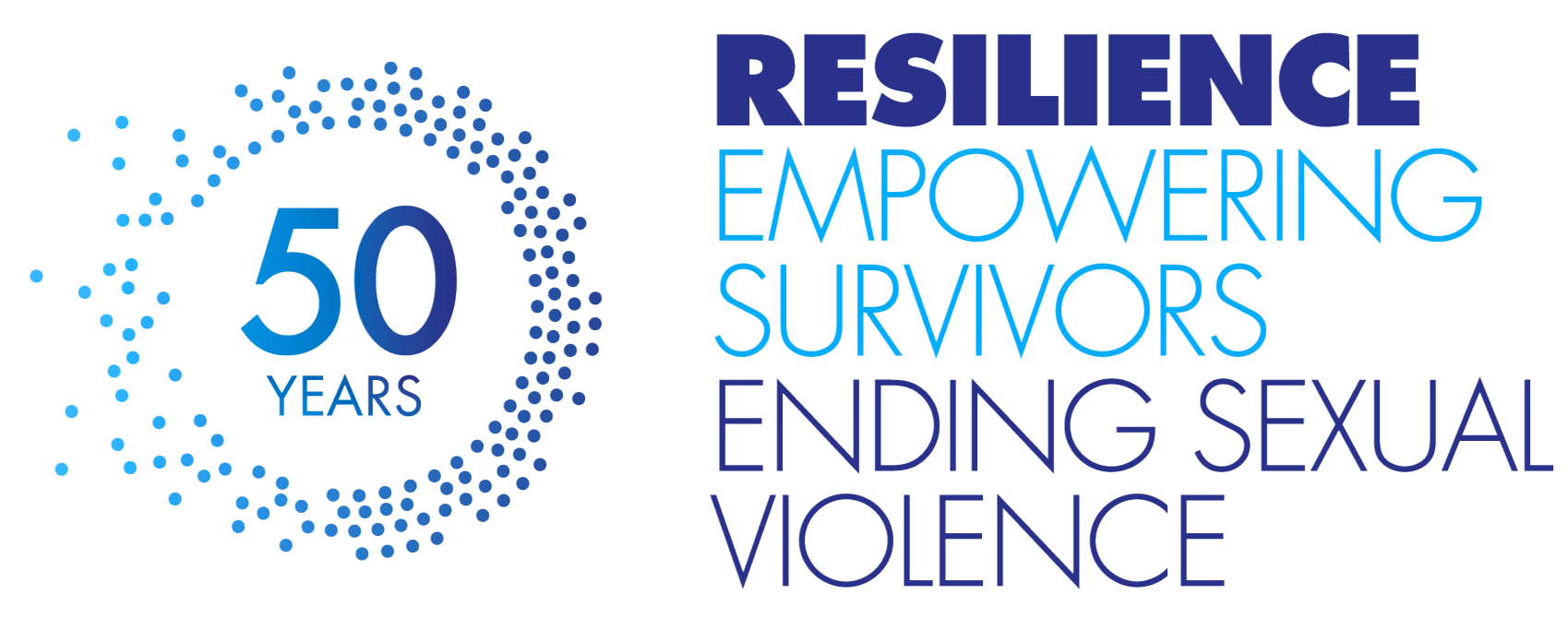This year, we’re continuing to celebrate the people who make #OurResilience possible and telling the stories of some of our incredible clients, staff, volunteers, and supporters. It is more important now than ever to embrace and celebrate what connects us: our resilience. This month, we’re proudly shining a spotlight on Emma Gonzalez, Senior Prevention Educator at Resilience.
Continue to read our interview with Emma.

My work at Resilience as a Prevention Educator means working with people of all ages, as young as kindergarten, all the way up until 12th grade, if we’re talking school-aged. Also college students, community members, parents, staff at schools, and volunteers. A lot of prevention education is talking about healthy communication, boundaries, safe adults, and how we can really make our world free from violence and show up for each other.
Tell me a little about what your day-to-day usually looks like as a Prevention Educator.
Both pre-pandemic and during pandemic times, I would say that school looked very similar, obviously aside from being virtual or in-person. I’m waking up early in the morning and making sure that I have all my teaching materials ready to go and all of my notes. Each class is different and learns in a different way, so it’s really about honoring and respecting the ways that we deliver our curriculum in a way that feels good for our students. It’s also emailing teachers and staff to make sure that everything is good to go if we’re troubleshooting or problem solving in any way. And then typically I’m also talking with community members if I am doing a training. I’m always kind of constantly doing outreach, even though I’m in schools and teaching. I will say the other thing is that being at home and working from home and being virtual has really expanded our capacity to be in schools and also do adult trainings. Before, we would teach for that day and then kind of be done for that day but now there’s a lot more flexibility in the different offerings that we have because of our schedules and because it’s so convenient to just log in and facilitate something.
What inspired or motivated you to get involved in this kind of work?
I am a survivor myself. I identify as a survivor of sexual violence. So I feel like that’s been a big motivation. I also really like working with young people. I really believe in youth rights, like Title IX rights for young people and making sure that they feel empowered to make the decisions that they want to make and that they have the support they need, because I feel like being a young person is really hard. Especially navigating relationships for the first time or if you have experienced trauma. That really drove me to do this work, just a combination of that personal experience and then just a lot of working experience with young people. This position has been really nice to really think about what are the best ways to give content and curriculum and also just work alongside our community in a way. That really drove me to do this work.
What are you most proud of during your time as a Prevention Educator?
I would say I’m most proud of, not even being an educator and teaching, but of how my students really interact with each other around these topics and call each other in, or how they have these discussions and are really thoughtful. I’m really proud of when they feel safe enough to share or explore or give really insightful, thoughtful answers. I feel like most of my job is just showing up and creating an environment that they feel safe in. So I feel really proud when that comes to fruition and there is that really good balance.
What are some of the biggest obstacles you face as a Prevention Educator?
I feel like some of the biggest obstacles I face as a Prevention Educator, at least right now, is just having to maintain such a busy schedule. It’s making time for everyone and sending emails back and having to do a lot of outreach and really keeping in mind that everyone is different and works in different ways. So I would say it’s just always making sure that we’re giving that attention to detail and staying on top of things. The obstacles are that it’s something that’s a very interactive role and position that always requires a lot of strategy, mindfulness, and thoughtfulness. I really love doing it, but it is something where sometimes it’s the end of the day and I’m like, all right, I get to go and take a nap now.
What is something that you, or Education and Training as a team are looking forward to in the next year?
We are currently revamping our curriculum and it will be really interesting because a lot of it is contingent on whether or not we’ll be back in person. So we are making modifications for virtual, but also in-person. That’s something we’re looking forward to, figuring out what the future of our programming is going to look like within Chicago Public Schools. I know we’re also really excited about doing more community outreach work and trying to reach young people that are not just in schools. We’re thinking about afterschool programming, places that like recreation centers, just different creative ways of where we can get young people at different points or different institutions that they’re involved in.
What is Restorative Justice and what are the goals of the Restorative Justice Committee?
Resilience has our restorative justice committee and a lot of it is based off of client work that we’ve done where survivors have wanted restorative options. Restorative justice is trying to restore back to a state of balance or a state of where before harm has taken place. A lot of restorative justice is working with someone to create an environment where accountability can take place, where we can have these hard conversations. So because we are a survivor centered agency, it’s important to include restorative justice as options. That can look like several different things based on what can feel restorative. It could be anything from helping a survivor or facilitating a move out of their abuser’s home. It could be writing a letter or a statement that’s going to be shared around their friend group of like, ‘hey, this is something that happened to me’ or being able to have a conversation with their friends and ask ‘can you talk to this person because they sexually assaulted a survivor, a client that we’re working with’. The work can look like so many different things, and it’s really using that creativity to have that healing process. It’s giving that power back to that survivor and that autonomy back to them. I would say our main goal is to really, like I said, center survivors, show up for survivors, and have honest conversations about healing, about restoration and about prevention as well. I would say a lot of restorative justice is also making sure that harm doesn’t take place in the future.
Are there any common misconceptions about restorative justice and what would you like to clear up about those misconceptions if there are any?
I feel like there’s always a big misconception that [restorative justice] is supposed to be a one-off. Like we have the criminal legal system and then we have restorative justice. Restorative justice is so broad and it can really mean a lot of different things. It’s really talking about leveraging your relationships and thinking about your environment. It’s important to know that restorative justice is very community-based. It can look like many different things. And while that feels really vague, there are a lot of ways that we’re already practicing restorative justice, we just don’t maybe call it that. One thing I learned from a colleague here is that if you helped your friend send a text message to their ex, you’ve done something restorative before. I think the biggest misconception is that people try to think about it in terms of systems or institutions when it’s really something that is very fluid and moving and breathing and constantly evolving.
What do you want people to know that you haven’t been asked about? (about Resilience, prevention education, or restorative justice)
I think something I want people to know that I haven’t been asked about is, what is prevention? I think prevention is more than just education, but it’s also fighting for human rights. So access to housing, transportation, all of those things also keep survivors safe. I think one thing I want people to know that I haven’t been asked about is that prevention is something that is multi-layered and multi-dimensional. It’s finding the intersectionality or the intersectional points between identities in which we can really show up for survivors and their needs. So like I said, housing, transportation, food, things of that nature. I think that’s another aspect of prevention and something that medical advocates team as well. So I would say that medical advocates also do a fair amount of prevention work.
